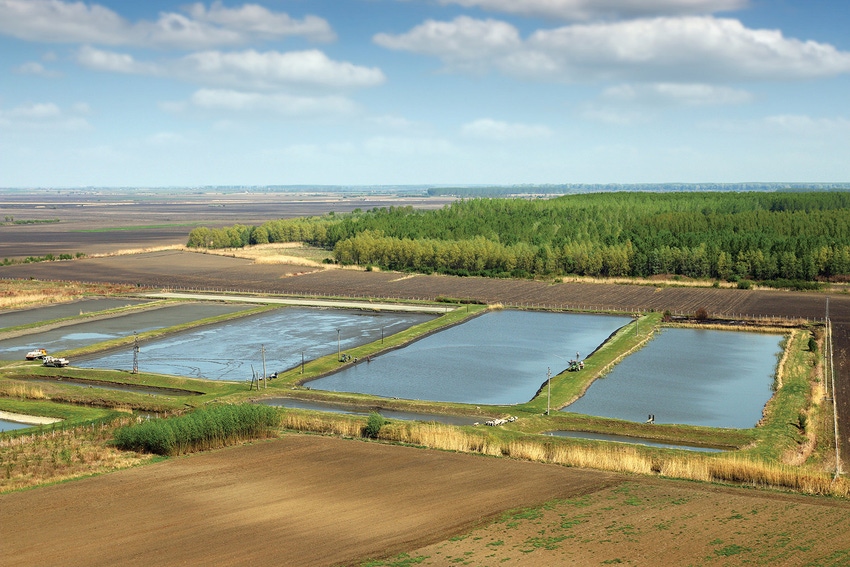
Emergency assistance is now available for food fish and other aquatic species that were affected by February storms through the Emergency Assistance for Livestock, Honey Bees and Farm-raised Fish Program (ELAP), according to Farm Service Agency administrator Zach Ducheneaux.
Until a recent policy change, only limited aquaculture operations were eligible for loss benefits through ELAP.
"Previously, there was a small subset of aquaculture that was included, which would have been bait fish or game fish," said Ducheneaux. "Now the program has been opened to a more broad spectrum.
"Any aquatic organisms that are grown for food or human consumption, that are reared in a controlled environment; fish that are raised as food for fish that are consumed by humans, also raised in a controlled environment; and even ornamental fish are included in this."
That includes catfish, tilapia and redfish in addition to other aquatic species including farm raised shrimp, crawfish, oysters and mussels.
Eligible producers can request ELAP assistance beginning June 1 for losses in 2021. The deadline to file for 2021 losses is January 31, 2022. However, the policy has been changed to also include losses that take place in subsequent years.
The change in policy came in response to catastrophic aquaculture losses due to major winter storms that hit the U.S. Gulf Coast in February.
"Shortly after Winter Storm Uri, we started to get calls from stakeholders," said Ducheneaux. "Some of our friends on the Hill even shared with us that there were some gaps in our disaster coverage. Prior to this the non-insured disaster assistance program was the only safety net program for folks that are in these other aquatic species."
That coverage is mostly at the catastrophic level, he said. Producers have to stand the first 50% of the loss themselves unless there is a buy-up option. But, that program was such an ill fit for these producers that nobody really had the coverage.
Stakeholder input
"So we took input from the stakeholders and got to work trying to analyze what latitude we had in the policy," he said. "And as it happens with this particular program, we have the latitude to define what eligible species are. We took input from all of the aquatic species producers that are in agriculture all across the country, trying to build a program that better suits everybody."
ELAP provides financial assistance to eligible producers of livestock, honeybees and farm-raised fish for losses due to disease, certain adverse weather events or loss conditions, including blizzards and wildfires, as determined by the Secretary of Agriculture.
As part of the policy change, FSA is waiving the requirement to file a notice of loss within 30 calendar days of when the loss was apparent. Contemporaneous records must be provided by the producer to document any loss event and demonstrate beginning and ending inventory.
Ducheneaux noted that FSA waived the requirement because the event happened more than 30 days ago. He said that when dealing with aquatic species, its harder to quantify death as readily as it is for something like a cow grazing on the prairie in a blizzard.
Better experience
The FSA is "trying to be cognizant of that and build a program that amounts to a good experience for our producers, because the fact of the matter is by the time they get to the office and get enrolled in ELAP, they've already survived a disaster and we don't need to build a cumbersome program to try to help," he said.
“We want producers of all kinds to know that we’re listening,” said Ducheneaux. "Today’s announcement demonstrates that USDA is committed to helping the aquaculture industry recover from losses due to Winter Storm Uri and other disaster events. We are pleased to offer these policy flexibilities and related financial relief to impacted aquaculture producers; and we encourage them to contact their local FSA office for assistance.”
USDA offers a comprehensive portfolio of disaster assistance programs. On farmers.gov, the Disaster Assistance Discovery Tool, Disaster-at-a-Glance fact sheet, and Farm Loan Discovery Tool can help producers and landowners determine all program or loan options available for disaster recovery assistance.
For assistance with a crop insurance claim, producers and landowners should contact their crop insurance agent. For FSA and NRCS programs, they should contact their local USDA Service Center.
About the Author(s)
You May Also Like






